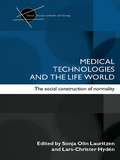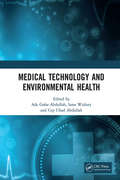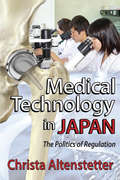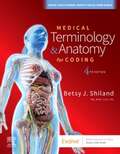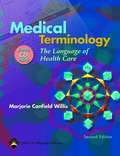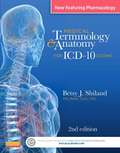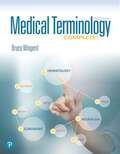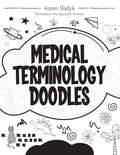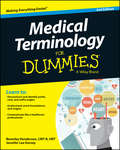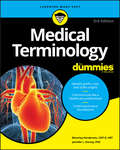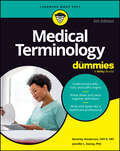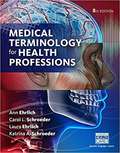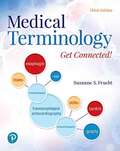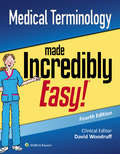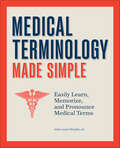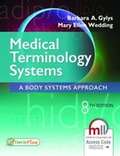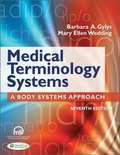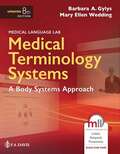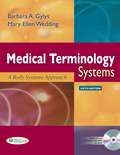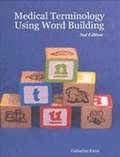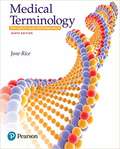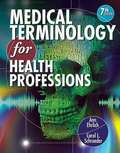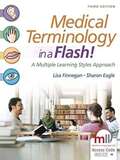- Table View
- List View
Medical Technologies and the Life World: The social construction of normality (Critical Studies in Health and Society)
by Lars-Christer Hydén Sonja Olin LauritzenAlthough the use of new health technologies in healthcare and medicine is generally seen as beneficial, there has been little analysis of the impact of such technologies on people’s lives and understandings of health and illness. This ground-breaking book explores how new technologies not only provide hope for cure and well-being, but also introduce new ethical dilemmas and raise questions about the 'natural' body. Focusing on the ways new health technologies intervene into our lives and affect our ideas about normalcy, the body and identity, Medical Technologies and the Life World explores: how new health technologies are understood by lay people and patients how the outcomes of these technologies are communicated in various clinical settings how these technologies can alter our notions of health and illness and create ‘new illness’. Written by authors with differing backgrounds in phenomenology, social psychology, social anthropology, communication studies and the nursing sciences, this sensational text is essential reading for students and academics of medical sociology, health and allied studies, and anyone with an interest in new health technologies.
Medical Technology and Environmental Health: Proceedings of the Medicine and Global Health Research Symposium (MoRes 2019), 22-23 October 2019, Bandung, Indonesia
by Ade Gafar Abdullah Isma Widiaty Cep Ubad AbdullahThe proceedings of the Medical and Global Health Research Symposium (MoRes) provides a selection of papers resulting from the conference, either research results or literature review, on advanced medical technology and environmental health in the era of industrial revolution 4.0. Nine major subject areas were presented in the this proceedings volume, comprising halal medicine: challenges and opportunities; infectious and non-infectious diseases; drug discoveries and development; community and occupational health; health policy and health insurance; hospital and nursing management; disaster relief and management; environment health and climate change; and digital and health technology. It is expected that the proceedings will give new insights into knowledge and practice of medicine and global health. Therefore, parties involved in medicine and global health such as academics, practitioners, business leaders, and others will benefit from the contents of the proceedings.
Medical Technology in Japan: The Politics of Regulation
by Christa AltenstetterJapan is suffering from a "device gap." Compared to its American and European counterparts, Japan lags in adopting innovative medical devices and making new treatments and procedures available to its patients. Many blame its government and bureaucracy for Japan's delayed access to modern medicine and new medical devices. Christa Altenstetter examines the contextual social, historical, and political conditions of Japan's medical field to make sense of the state of the country's medical profession and its regulatory framework. She explores the development of regulatory frameworks and considers possibilities for eventual reform and modernization. More specifically, Altenstetter looks into how physicians and device companies connect to the government and bureaucracy, the relationships connecting Japanese patients to their medical system and governmental bureaucracy, and how the relationships between policymakers and the medical profession are changing. The issues addressed here are becoming increasingly relevant as numerous countries in Asia, Latin America, and Central and Eastern Europe are only now beginning to regulate medical technology, following the lead of the US and the European Union. Those interested in global medicine and Asian studies will find this book both informative and compelling.
Medical Terminology & Anatomy for Coding
by Betsy J. ShilandMedical Terminology & Anatomy for Coding, 4th Edition is unlike any other medical terminology textbook on the market! With interspersed ICD-10 and CPT coding guidelines and notes, electronic medical records, and integrated exercises, it combines anatomy and physiology coverage with the latest medical terminology needed by coders and coding students. The ICD-10-CM classification system serves as the structure for organizing diseases and disorders, with carefully drawn, well-labelled illustrations to help you visualize the associated anatomy. A new Infectious Disease Process Basics appendix provides the terminology and physiology of infectious diseases. Updated CPT coding information indicates where physician coding differs from ICD-10 coding.
Medical Terminology (Second Edition): The Language of Healthcare
by Marjorie Canfield WillisMedical Terminology The Language of Health Care
Medical Terminology And Anatomy For ICD-10 Coding (Second Edition)
by Betsy J. ShilandMedical Terminology and Anatomy for ICD-10 Coding integrates expanded anatomy, physiology, and pharmacology coverage with the latest medical terminology you need to correctly code in ICD-10. The ICD-10-CM classification system serves as the structure for organizing diseases and disorders, with carefully drawn, well-labeled illustrations to help you visualize the associated anatomy. ICD-10 coding guidelines and notes, along with electronic medical records and integrated exercises are interspersed throughout the text. A robust Evolve site includes games, activities, and animations to reinforce learning. Medical terminology specifically tailored to ICD-10-CM and ICD-10-PCS guidelines supply you with an excellent foundation for learning the medical terminology related to ICD-10-CM. Learn all the anatomy and physiology necessary to be able to understand medical reports and code accurately in ICD-10-CM/PCS. Pathology terms organized by ICD-10 disease and disorder categories let you learn terms in the same order they are presented in the coding manual. Guideline Alert! boxes highlight ICD-10-PCS coding information when relevant to medical terminology. Special Notes boxes present ICD-10 features that affect your understanding of the terminology presented. Root operation tables illustrate the root operations in PCS and their associated suffixes. Body Part key provides a complete list of body parts and how they should be coded in ICD-10. Pathology and procedure terminology tables list the word parts for each term, along with the definition so you become familiar with prefixes, suffixes, and combining forms. Exercises interspersed throughout the text encourage you to practice and learn as you move through the material. Be Careful! boxes warn you about similar and potentially confusing word parts and medical terms. Games and activities on accompanying Evolve website offer an easily accessible source for extra interactive practice and learning. Electronic medical record format illustrates the appearance of electronic records now being used in many healthcare settings. NEW! Pharmacology in each body system and a Pharmacology Basics appendix help you recognize drugs and medications in medical reports. NEW! More than 50 new images bring terminology to life. NEW! Additional procedural terms supply a more complete picture of the number and kind of procedures you will encounter on medical reports. NEW! Normal Lab Values appendix familiarizes you with normal and abnormal lab values so you know when to search a medical record for possible additional diagnoses. NEW! Tablet and mobile-optimized Evolve activities offer an easily accessible source for extra interactive practice and learning.
Medical Terminology Complete!
by Bruce WingerdMedical Terminology Complete! takes a programmed approach to presenting the most current language of healthcare. Organized by body system, the text conveys the medical terms used in medical offices, hospitals and clinics, together with essential A&P information. You'll get step-by-step guidance in building medical terms. Word Part Reminders show you how word parts combine to form a term, while Word Part Breakdowns identify word parts. Some exercises offer word-building practice, while others use medical reports to show how medical terms are used in practice. The 4th Edition improves clinical training for students poised to a launch a healthcare career. New types of chapter-ending exercises, such as Define the Combining Form and Complete the Labels exercises, round out a comprehensive series of practice opportunities.
Medical Terminology Doodles
by Karen SladykToday's students have expressed a strong preference for multiple modes of information delivery, including visual, auditory and kinesthetic. Medical Terminology Doodles by Dr. Karen Sladyk is a unique book based on evidence that suggests that a multi-sensory approach that includes doodling can promote better knowledge retention than traditional methods in learning medical terminology.Medical Terminology Doodles offers 266 of the most common medical terms to explore and learn through doodling. By drawing or doodling related images, students will create permanent connections between the brain and the terms, as well as their root words, prefixes, and suffixes. Study hints, spelling hints, and sample illustrations are offered for each of the words, but students are also encouraged to personalize their learning by assigning meaning to the terms and creating their own “art.” Using visual cues to remember information will encourage students to review the material at hand and will also help them understand the way that terms connect to larger medical concepts. Medical Terminology Doodles is a must-have for students looking for a unique manner in which to engage with complicated scientific material. On the road to becoming a successful practitioner in the health professions, you can never underestimate the power of a doodle!
Medical Terminology For Dummies
by Jennifer Lee Dorsey Beverley HendersonConfused by medical terms? Don't know a carcinoma from a hematoma? Medical Terminology For Dummies gets you up to speed quickly on medical terminology fundamentals and helps you master medical definitions, pronunciations, and applications across all health care fields. Once you understand medical prefixes, suffixes, and root words, you'll approach even unfamiliar medical terms with confidence.This plain-English guide to language that can be just plain confusing clears up the meanings of the Greek and Latin sources of medical terms. You'll get a handle on how these mouthfuls are constructed, and discover how to decipher any medical term, no matter how complex or unusual. You'll also get plenty of help in pronouncing and remembering medical words, and you'll find out how and why the terminology changes from hospital to laboratory to pharmacy. You'll discover how to:Understand word foundations and originsGrasp the essential meanings of unfamiliar termsDefine common prefixes and suffixesIdentify and pronounce medical termsDeconstruct words to grasp definitionsUse plurals and multiples with easeDescribe medical conditions accuratelyBone up on terms that describe the anatomyUse mnemonic devices to remember medical termsKnow when words refer to diseases, injuries, treatments, and moreUse medical terminology in the real worldComplete with a list of essential references on medical terminology as well as helpful word-building activities Medical Terminology For Dummies puts you in the know in no time.
Medical Terminology For Dummies
by Beverley Henderson Jennifer L. DorseyTake the intimidation out of medical terminology Every job in the medical field needs some background in medical terminology. From the check-in desk to the doctor to the pharmaceutical sales rep, and everyone around and in between, healthcare professionals and those in adjacent fields use a common and consistent vocabulary to improve quality, safety, and efficiency. Medical Terminology For Dummies is a powerful resource for current and prospective healthcare professionals. It provides different ways to memorize the words and their meanings, including ideas for study materials, flash cards, quizzes, mind maps, and games. Plus, you’ll discover how to identify, pronounce, define, and apply words in proper context. Grasp the standardized language of medicine Find the easiest way to remember tongue-twisting terms Benefit from lots of definitions and examples Understand, retain, and put this knowledge to use If you’re one of the millions of professionals hoping to succeed in this booming field, this book gets you talking the talk so you can walk the walk!
Medical Terminology For Dummies
by Beverley Henderson Jennifer L. DorseyBecome fluent in the standardized language of all medical fields Medical Terminology For Dummies is a resource for current and prospective healthcare professionals who need to understand medical terms, from common to complex. This book clearly explains how to quickly identify, pronounce, define, and apply medical terms in a healthcare setting. You'll also find ideas for creating mind maps and games to help you study and retain the language of medicine. Pair those study tools with an understanding of the history and origins of key prefixes, suffixes, and roots, and you'll be confident in no time. This updated guide covers the 2022 updates to ICD-10 codes, and it includes added terminology related to public health and infectious diseases. Whatever healthcare field you're in, this book will serve as your glossary of terms and a gateway to future learning opportunities. Understand prefixes, roots, and suffixes, so you can confidently work out the meanings of complex terms Practice defining medical terms and get help memorizing key vocabulary elements Enhance your professional expertise in any healthcare setting Improve the safety and accuracy of medical communications All medical and healthcare related careers require some knowledge of medical terminology. Start off on the right foot—or brush up what you already know—with Medical Terminology For Dummies.
Medical Terminology For Health Professions
by Ann Ehrlich Carol L. SchroederEmphasizing current, relevant, "need-to-know" terms that will help you succeed in the health care field, MEDICAL TERMINOLOGY FOR HEALTH PROFESSIONS, 8E simplifies the process of memorizing complex medical terminology by focusing on the important word parts--common prefixes, suffixes and root words--to provide a foundation for learning hundreds of medical terms. Organized by body systems, chapters begin with an overview of the terminology related to the body's structures and functions, proceed through diseases and disorders, and end with diagnostic procedures and treatments. A proven combination of learning principles and exercises helps you master the language necessary to describe how the human body works, what goes wrong with it, and how it is treated. An updated art program features the latest terms and procedures as well as multi-cultural/multi-generational photos that accurately portray the opportunities available in today's medical field.
Medical Terminology Get Connected!
by Suzanne S. Frucht PhDMedical Terminology: Get Connected! is an intro-level essentials text. It prepares you to make connections, whether that's joining word parts into medical terms, understanding body systems or forging professional relationships. Unlike other medical terminology resources, this text presents terms by medical specialty, rather than organ systems, giving it practical use. Medical terms for all key body systems are covered in the context of 15 medical specialties. Additionally, the combining forms, suffixes and prefixes common to each medical specialty are defined in a section of each chapter, reinforcing connections. <P><P> The fully updated 3rd Edition now has more engaging practice exercises and more robust visuals. It also narrows in on the work of healthcare practitioners who use medical terms daily.
Medical Terminology Made Incredibly Easy! (Incredibly Easy! Series®)
by Lippincott Williams WilkinsFeeling overwhelmed by medical terminology? Grab a lifeline: the newly updated Medical Terminology Made Incredibly Easy!®, 4th Editionoffers clear and simple explanations of vital terms and their everyday use in nursing practice. Backed by humor and chock full of illustrations, this enjoyable text is the perfect backup to class materials and the ideal on-the-job refresher for experienced nurses and all healthcare professionals. Learn how to decipher complex terms from the roots up—and take your confidence to a whole new level. Be expertly guided through the choppy waters of medical terminology … NEW and updated content clarifies medical terminology concepts with clear definitions and illustrations Explains the meanings, roots, and pronunciation of terms as used in everyday practice, including: Names for all major body systems: skeletal, muscular, integumentary, cardiovascular, respiratory, gastrointestinal, urinary, reproductive, neurologic, endocrine, blood and lymphatic, and sensory systems Terms and phrases used in maternal health, pharmacology, and mental health Breaks down complex medical terms into recognizable components—common prefixes, roots, and suffixes—to help you identify the meaning of any term Offers a strong anatomy and physiology overview backed by numerous images, including a large image of each organ system Chapter features provide learning aids and on-the-unit support: Just the facts—quick summary of chapter content Vocabulary builders—end-of-chapter games such as crossword puzzles, matching roots and prefixes to their correct meanings, and fill-in-the-blank sentences to help you retain learning Pump up your pronunciation—phonetic spellings make it easy to pronounce complex terms Anatomically speaking—anatomy illustrations, with pronunciations of key terms Memory jogger—stories and tools that support retention “Nurse Joy” and “Jake” —explain key concepts and offer friendly problem-solving tips Beyond the dictionary—learn the origins of words, to help you remember word roots and dissect meanings The real world—explains informal terms used in daily practice
Medical Terminology Made Simple: Easily Learn, Memorize, and Pronounce Medical Terms
by John TempleYour handy guide to understanding medical and healthcare termsWhen it comes to communicating with your doctor, mastering healthcare terminology you might hear from them is essential. Knowing what these words mean can help you ask the right questions and better understand your body, medical conditions, and any health guidance you receive. This medical reference book makes it easier to get familiar with common medical terms, so you feel more confident navigating your own care.Practical vocabulary—This mini medical dictionary focuses only on the most common and useful terminology so it's small enough to carry with you and easy to find the information you need.Break down each word—Did you know that hypotension means low blood pressure and hypertension means high blood pressure? Learn the anatomy of different medical terms so you can understand how they relate to each other.Feel prepared—Know the right words to use when you understand how doctors think and how to talk to them when.Learn the language of medicine with Medical Terminology Made Simple.
Medical Terminology Systems (Eighth Edition): A Body Systems Approach
by Barbara A. Gylys Mary Ellen WeddingBuilding on the success of previous editions, Medical Terminology Systems, 8th edition, continues its well-established record of presenting medical word building principles based on competency-based curricula.
Medical Terminology Systems 7th Edition
by Barbara A. Gylys Mary Ellen WeddingA word building and body systems approach to learning medical terminology. You’ll begin by learning the parts of words—roots, combining forms, suffixes, and prefixes. Then, use your understanding of word parts to learn medical terminology. Mnemonic devices and engaging, interactive activities make word-building fun and easy, ensuring you retain the information you need for success.
Medical Terminology Systems Updated: A Body Systems Approach
by Barbara A. Gylys Mary Ellen WeddingMedical Terminology Systems and Medical Language Lab (MLL) work together to create an immersive, multimedia experience that tracks each student’s progress until they’ve mastered the language of medicine. An access code inside new, printed textbooks unlocks an eBook, as well as access to MLL.
Medical Terminology Systems: A Body Systems Approach (6th edition)
by Barbara A. Gylys Mary Ellen WeddingThe book includes: A CLEAR, CONCISE PRESENTATION using the classic word-building and body systems approach to learning, CHAPTER OUTLINES to orient students to each chapter’s content, HOW DOES WORD BUILDING WORK? it begins with the basics, KEY TERMS highlighted in the beginning of each chapter, and ABBREVIATIONS for common terms.
Medical Terminology Using Word Building
by Catherine KurtzThis is a great course for beginners, the experienced, and everyone in between! This course teaches what we call Word Building, which is the knowledge of how all medical words are structured. It's a quick, efficient and amazingly easy way for anyone to learn medical terminology. You learn how to recognize the meaning of a medical term by dividing the word into its three basic component parts: the prefix, root and suffix. By knowing the meanings of the prefixes, suffixes, and root words, you can easily make sense of a medical term. This course is designed for the healthcare claims biller, the medical insurance claims adjuster, the medical office worker, or anyone wanting to learn medical terminology. The course takes the average person 3 weeks or less to complete based on a study time of 1-2 hours per day.
Medical Terminology for Health Care Professionals
by Jane Rice<p>For all courses in medical terminology in any health-related program, including Nursing, Medical Assisting, Medical Coding, Medical Records, Medical Transcription, Respiratory Therapy, Surgical Technician, Radiology, all Allied Health Programs, and even Business Education. A time-proven, word-building approach to learning modern medical vocabulary Medical Terminology for Health Care Professionals will help students quickly master the modern terminology of healthcare, and learn techniques for decoding any new term throughout their careers. It offers an intuitive system for learning medical vocabulary by building terms from word parts. <p>Every chapter is built around a color-coded word list that shows how word parts are built, pronounced, and defined. Readers are introduced to medical terminology and its essential suffixes and prefixes, and then guided through each key body system. Proven to build both proficiency and confidence in students with a wide range of backgrounds and goals, special topics range from cancer, to mental illness, to lifespan considerations. Innovative pedagogy throughout the book offers plenty of opportunities for students to learn, practice, and connect terminology to real-world clients and clinical settings. <p>The Ninth Edition integrates a new Insights feature that familiarizes readers with some of the latest coding terminology being used in The Complete Official Codebook ICD-10-CM, 2016, better preparing them for working in the field of modern healthcare.</p>
Medical Terminology for Health Professions
by Ann Ehrlich Carol L. SchroederUse a proven combination of learning principles and exercises to make learning medical terminology easier . Now in its 7th Edition, MEDICAL TERMINOLOGY FOR HEALTH PROFESSIONS simplifies the process of memorizing complex medical terminology by focusing on the important word parts -- the common prefixes, suffixes and root words -- to provide a foundation for learning hundreds of medical terms. Organized by body systems, the chapters begin with an overview of the terminology related to the body's structures and functions, then proceed through diseases and disorders, and finally diagnostic procedures and treatments. This helps students master the necessary language to describe how the human body works, what goes wrong with it, and how we treat it. Every chapter engages learners with the See and Say pronunciation system, intreractive excersizes, real life medical scenarios and critical thinking exercises. An updated art program includes illustrations that reflect the latest terms and procedures, and multi-cultural /multi-generational photos that accurately portray today's medical world. Built-in multimedia is included with the text on the StudyWare CD-ROM. This resource is packed full of activities that engage student with games, quizzes, animations, and an audio glossary -ultimately helping students study , prepare for exams, and achieve success . Optional workbook and online courseware is also available.
Medical Terminology for Health Professions
by Ann Ehrlich Carol L. Schroeder Laura Ehrlich Katrina Schroeder SmithUpdated to reflect real-world practice, Schroeder/Ehrlich/Schroeder Smith/Ehrlich's MEDICAL TERMINOLOGY FOR HEALTH PROFESSIONS, 9E focuses on the current, relevant terms students need to know to succeed in health care. The program simplifies the process of memorizing complex medical terms by focusing on the importance of word parts -- common prefixes, suffixes and root words -- that provide the basis for most medical terms. In each chapter, learners practice the pronunciation and understanding of key terms through interactive activities, real-life medical scenarios and critical thinking exercises. The latest edition of this market leader includes expanded coverage of gender identity and gender reassignment, COVID-19, durable medical equipment, dental procedures, diabetic pathology, and more.
Medical Terminology in a Flash! A Multiple Learning Styles Approach: A Multiple Learning Styles Approach
by Lisa Finnegan Sharon EagleNIMAC-sourced textbook
Medical Terminology in a Flash!: A Multiple Learning Styles Approach
by Lisa Finnegan Sharon EagleMedical Language Lab for Medical Terminology in a Flash! 3rd Edition www.MedicalLanguageLab.com Instant Access: 978-0-8036-4253-9 Access Card: 978-0-8036-5703-8 <p><p>How do you learn best? The 3rd Edition of this popular text features an emphasis on meeting the needs of all learning styles by providing a visually rich text, an online learning program, and perforated/tear-out flash cards at the back of the book. The online learning program, the Medical Language Lab 2.0, is included with the text and comes with lecture videos and an integrated e-book. (See below for details.) <p><p>You’ll discover how to make different study strategies work for you, whether your preference for learning is auditory, visual, kinesthetic, oral-dependent, or writing-dependent learner. Online. Interactive. Progressive. <p><p>The Medical Language Lab 2.0 is the interactive, online program that ensures you master the language of medicine. Based on proven language methodology, it guides you step by step from basic through advanced levels of proficiency to become a confident medical language speaker. <p><p>A special code in the front of the book unlocks The MLL for you…including an ebook of the text and lecture videos. Instructors can use it with their current learning management system or with its integrated grade book. They can also customize it to meet the needs of their course. Want to learn more? Visit the Medical Language Lab now. Instructors - request preview access and explore Medical Language Lab using this step-by-step walkthrough.
